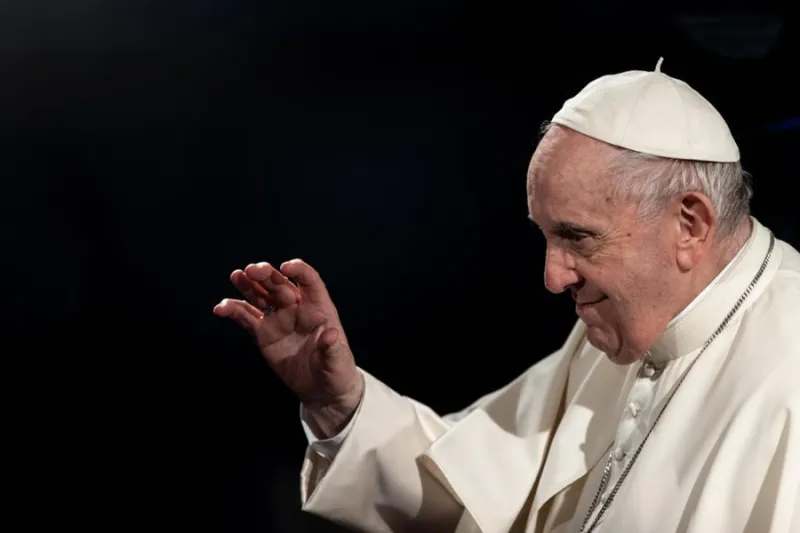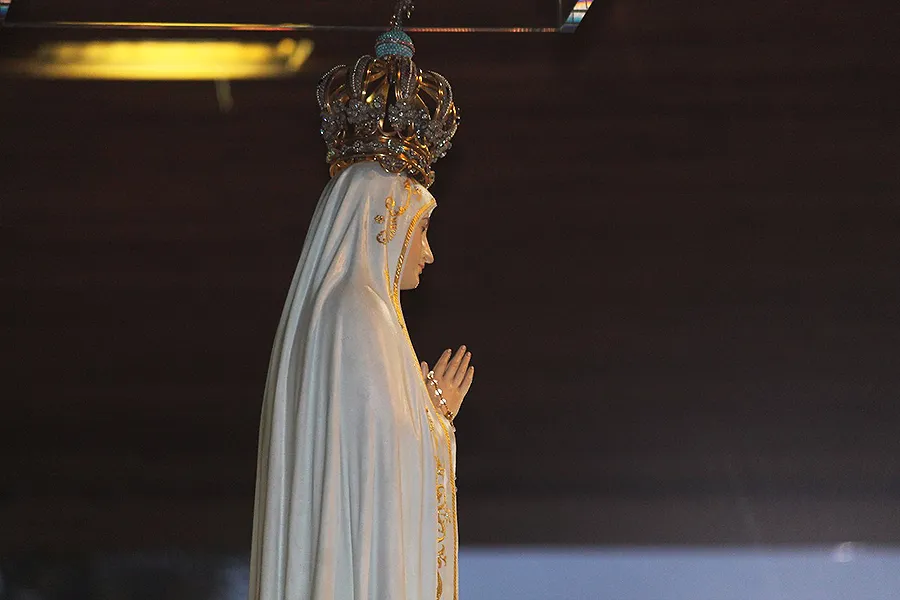
Vatican City, Feb 26, 2019 / 09:58 am (CNA).- The redemption of creation takes center stage in Pope Francis’ Lenten message this year, which connects man’s sinfulness to environmental issues.
“Sin leads man to consider himself the god of creation, to see himself as its absolute master and to use it, not for the purpose willed by the Creator but for his own interests, to the detriment of other creatures,” Pope Francis wrote in his Lenten message published Feb. 26.
“Once God’s law, the law of love, is forsaken … it leads to the exploitation of creation, both persons and the environment, due to that insatiable covetousness which sees every desire as a right and sooner or later destroys all those in its grip,” he said.
The pope’s message — originally written on the Feast of St. Francis of Assisi in October — is a reflection on a line from St. Paul’s Letter to the Romans, “For the creation waits with eager longing for the revealing of the children of God.”
“All creation is called, with us, to go forth from its bondage to decay and obtain the glorious liberty of the children of God,” Pope Francis said. “Lent is a sacramental sign of this conversion.”
Ultimately, Francis points to the traditional Lenten practices of fasting, prayer, and almsgiving as the remedy to the rupture between God, man, and creation caused by sin.
In fasting, we learn “to change our attitude towards others and all of creation, turning away from the temptation to ‘devour’ everything to satisfy our voracity and being ready to suffer for love, which can fill the emptiness of our hearts,” he explained.
Prayer leads us to “abandon idolatry and the self-sufficiency of our ego,” he added.
Through almsgiving, “we escape from the insanity of hoarding everything for ourselves in the illusory belief that we can secure a future that does not belong to us,” Francis said.
The pope warned against living “a life that exceeds those limits imposed by our human condition and nature itself.”
“The sin that lurks in the human heart takes the shape of greed and unbridled pursuit of comfort, lack of concern for the good of others and even of oneself,” Pope Francis said.
“Unless we tend constantly towards Easter, towards the horizon of the Resurrection, the mentality expressed in the slogans ‘I want it all and I want it now!’ and ‘Too much is never enough,’ gains the upper hand,” he said.
Cardinal Peter Turkson, prefect of the Vatican’s Department for the Integral Human Development, explained the logic behind this year’s Lenten message as rooted in the Church’s social doctrine of humanity as an “interconnected and interdependent part of the world” that God created, adding that the Genesis narrative places the human being as “high priest of creation.”
“The redemption of humanity and its liberation from evil and sin express the redemption of all creation from the curse and from all the evils that it suffers because of the sin of humanity,” Turkson said Feb. 26.
He continued, “In this Lenten time, awaiting the celebration of the memory of Christ’s redeeming work for us, so that Christ’s victory over sin and death may also become ours, we ourselves ‘who possess the first fruits of the Spirit, groan inwardly waiting for adoption to children, the redemption of our body.”
“Every action of man, both for evil and for good has cosmic consequences,” Monsignor Segundo Tejado Munoz, undersecretary of the dicastery of Integral Human Development added.
“Every abuse, every theft, every murder, each of these makes a planet disappear. Every action of ours in that is evil, but also the good, has a reaction in creation, the need among all of us in conversion,” Munoz said.
The liturgical season of Lent for 2019 will begin next week on March 6. Pope Francis’ Lenten messages contains a reminder that “the ‘Lenten’ period of forty days spent by the Son of God in the desert of creation had the goal of making it once more that garden of communion with God that it was before original sin.”
“May our Lent this year be a journey along that same path, bringing the hope of Christ also to creation,” he said.
 […]
[…]







Interfaith prayer is a meaningful initiative. The community of Sant’Egidio is serving humanity with dedication and distinction. May their tribe increase.
Really? What does it mean?
For the Christens persecuted worldwide by those who deny the Blessed Trinity, the Incarnation, who worship demons that if named cause censurship?
For Catholics kicked out of Churches by the 2nd Bishop in White because they pray in Latin – first in China, and now Worldwide: what does it mean?
What does it mean to see the once honourable Catholic Church confirming gnostics, heretics, and those worshiping false idols in their error?
Simpleton headline writers, and others, continue to equate “interreligious” with the inventive non sequitur: “interfaith.” Religious beliefs are one thing; the unique faith in the person of incarnate Jesus Christ is quite another.
From their sites, it’s clear that Sant’ Egidio, itself, knows the difference. As for the spirit of Saint Francis, what was the purpose for his famous visit in A.D. 1219 with Sultan Malek al-Kamil at Damietta on the Nile Delta, then under siege by an army of the Fifth Crusade?…
The purpose was conversion, not the sharing of tea in a flat-earth dialogue of interreligious equivalency. So, without implying such equivalency, in the Roman Colosseum let there be interreligious prayer for peace. (At least it’s not the twelve-niched, polytheistic and now secularized pantheon!) But for the global spectators, also let there by some understanding and indication of the Christian Faith.
And, even some anti-cancel culture curiosity about the ins and outs of real history. In the Paradiso, Canto XI, Dante says that St. Francis sought martyrdom and that failing this he left; and implies that the Sultan might not have been attracted to Lady Poverty. Later in the mid-13th century, and fearful of the Mogul invasions, other Franciscans made their way to Mongolia (where there is now a newly minted Catholic cardinal!) in unsuccessful efforts to convert the Khan, and with the remote possibility of even joining in an alliance against Islam. One of these (John of Pian de Carpine, 1180?-1252) had been a companion of St. Francis (See Daniel Boorstin, “The Discoverers”, 1983).
The present “Francis” presented bishops to the World from the Amazon proudly announcing in his name that they “had never committed a single baptism.”
Proselytism being a “crime” in Freemasonry and a “Sin” in post-catholic Bergoglioism – not that there could possibly be even a remote connection – there should be no risk of any baptisms at the Colosseum – to the great relief to all of Francis’ “Sin-OD” friends. Perish the thought! This is the Francis who begs Anglican bishops NOT to Convert…